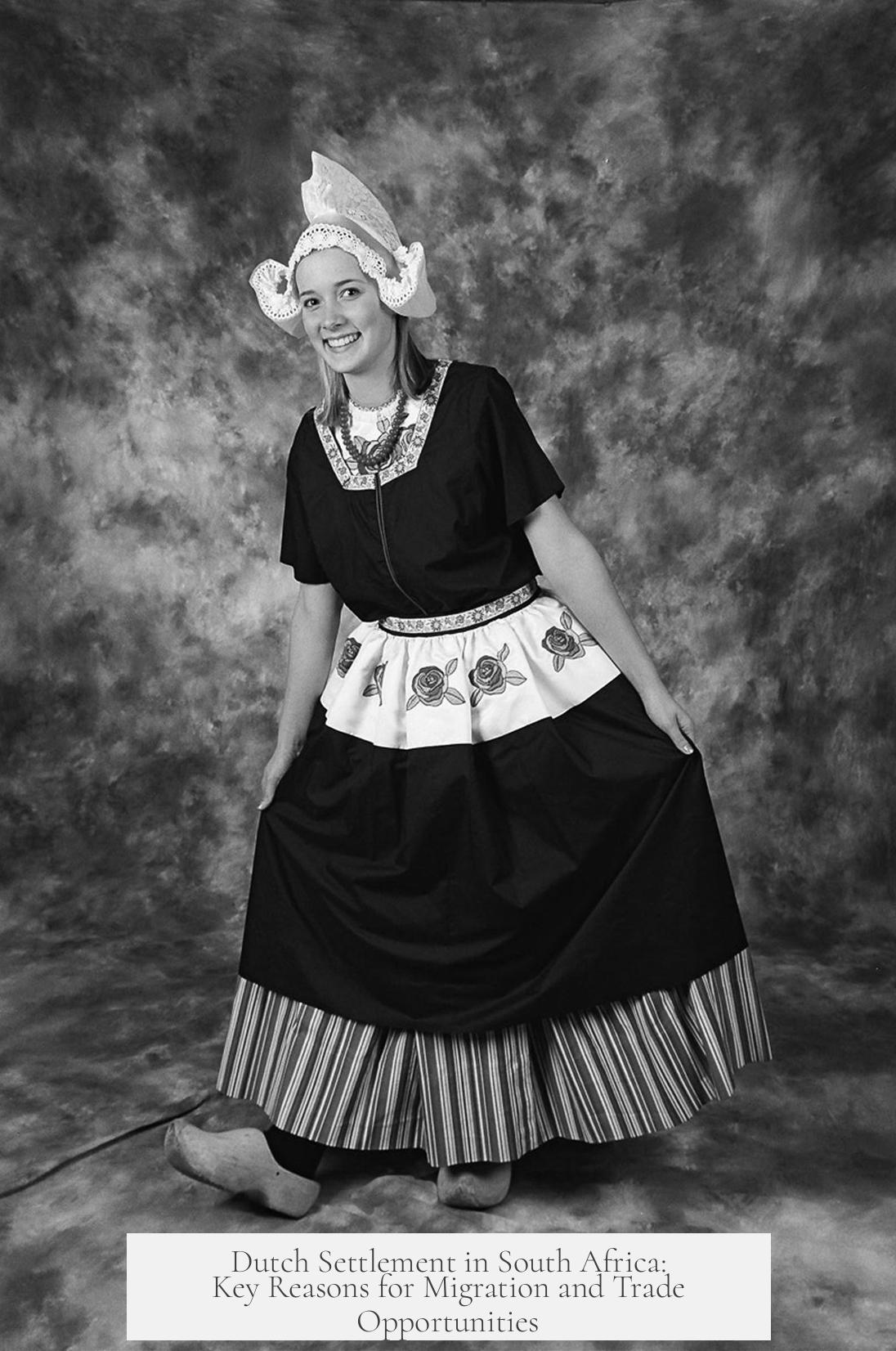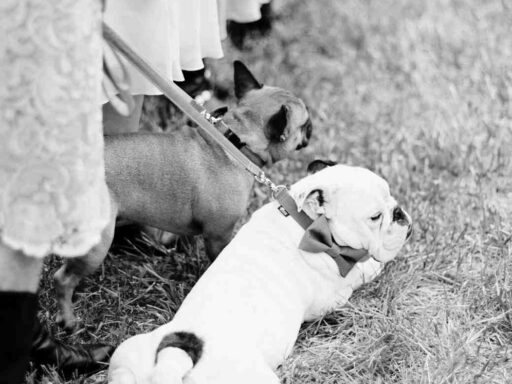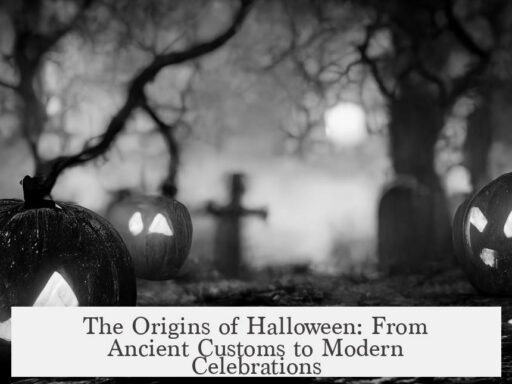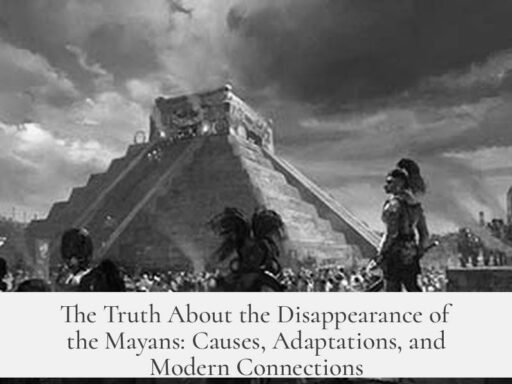The Dutch moved into South Africa mainly to establish a strategic resupply point for their ships traveling to and from the East Indies. South Africa’s location at the southern tip of Africa offered a crucial stopover on the VOC (Vereenigde Oost-Indische Compagnie) trade route, where vessels could refill supplies and wait for favorable winds to continue their journey.
Initially, the Dutch settlement at Cape Town began as a small station with a few farmers supplying fresh produce to passing VOC ships. The colony’s growth paralleled the expansion of Dutch trade, developing into a vital logistical hub. Cape Colony’s position allowed ships traveling eastward to restock, as the sea route included long stretches of ocean subjected to variable and seasonal winds. Waiting at Cape Town was often necessary to catch the proper trade winds to reach Southeast Asia efficiently.
Farmers, known as Boeren, gradually moved inland following a common colonization pattern. This expansion increased the Dutch presence beyond the coastal area, creating more established settlements. Notably, the early settler population was diverse: Dutch settlers made up about 40%, with Germans and French Protestants constituting the other 60%. This mix was partly due to demographic pressures in Germany and an influx of Protestant refugees from France into the Netherlands.
The strategic significance of Cape Colony changed dramatically during the Napoleonic era. When the French republic conquered the Netherlands and placed Louis-Napoleon on the throne, Britain viewed the Cape as a vital asset and took control of the colony. The Congress of Vienna later confirmed British possession, compensating the Dutch monarchy with other territories. The British interest deepened especially after diamond discoveries inland, leading to disputes and conflicts with Boer settlers who established semi-autonomous states like the Transvaal and Orange Free State.
British control gave rise to intensified efforts to dominate southern Africa, culminating in the Boer Wars. These wars highlighted tensions caused by resources and imperial ambitions.
| Key Reason | Details |
|---|---|
| Strategic Location | Resupply point for VOC ships en route to East Indies via southern sea route |
| Trade Winds and Currents | Needed stop to wait for favorable Indian Ocean trade winds and Atlantic currents |
| Population Composition | Diverse settlers: Dutch, Germans, French Protestants |
| Expansion | Boers moved inland, founding self-governed states |
| British Involvement | Seized Cape Colony during Napoleonic wars, leading to Boer conflicts |
- The Cape of Good Hope’s location was vital for VOC trade routes.
- Ships required fresh supplies and favorable wind conditions.
- Settler population was ethnically mixed, not solely Dutch.
- Political changes in Europe caused British control over the colony.
- Boer inland expansion created lasting political and military conflicts.
Why Did Dutch People Move Into South Africa? And Why South Africa in Particular?
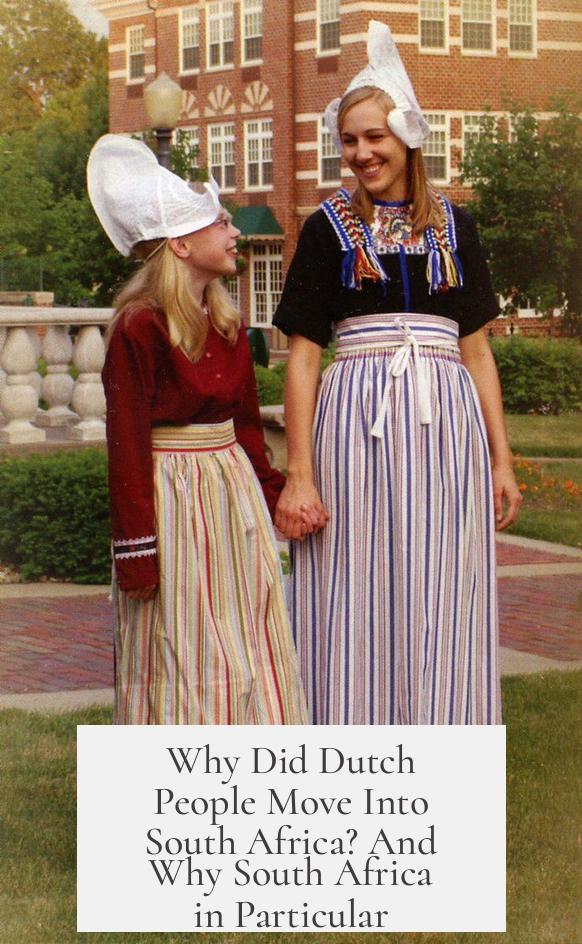
The short answer? The Dutch moved to South Africa primarily because it was the perfect pit stop for their ships heading to the lucrative East Indies trade. South Africa became a crucial resupply point in the 17th century for the Dutch East India Company, or VOC as the cool kids called it. But there’s much more to the story.
Picture yourself as a 17th-century Dutch sailor. You’ve got to sail from the Netherlands all the way around Africa to reach spice-rich Southeast Asia. This journey is LONG and CHALLENGING.
You need a spot to rest, repair your ship, and stock up on fresh food and water. This stopover? The Cape of Good Hope, in modern-day South Africa.
South Africa: The Perfect Resupply Point for VOC Trade
The VOC started out as a brilliant trade corporation, ambitious and practical. The company set up a station at the Cape around 1652, founding Cape Town. Initially, it was just a small outpost with a handful of farmers supplying fresh produce to passing ships.
Why Cape Town? Because this wasn’t just a random spot on the map—it was strategically located right at the southern tip of Africa, the gateway between the Atlantic and Indian Oceans. Ships needed to wait here for favorable winds to push them east or west, so having a reliable station was essential.
As Dutch trade flourished, so did Cape Town. What started as a few farmers quickly blossomed into a bustling colony. Farmers—known as Boeren—began moving inland, mirroring classic colonial expansion patterns seen elsewhere, like in the Americas. This inland movement laid the foundation for future South African communities.
But Wait—Were the Settlers Really Dutch?
Here’s a fun twist: Not all early settlers were Dutch. Despite their dominant control of the VOC, only about 40% of the settlers were ethnically Dutch. Surprisingly, another 40% were Germans, and the remainder were French.
What explains this mix? Well, Europe was a bit crowded back then, especially Germany. Plus, many French Protestants fled religious persecution and found a new home within the Netherlands before moving to South Africa.
This melting pot of settlers inevitably influenced the culture, language, and society in the Cape Colony.
The British Got Involved: Change of Hands and Boer Expansion
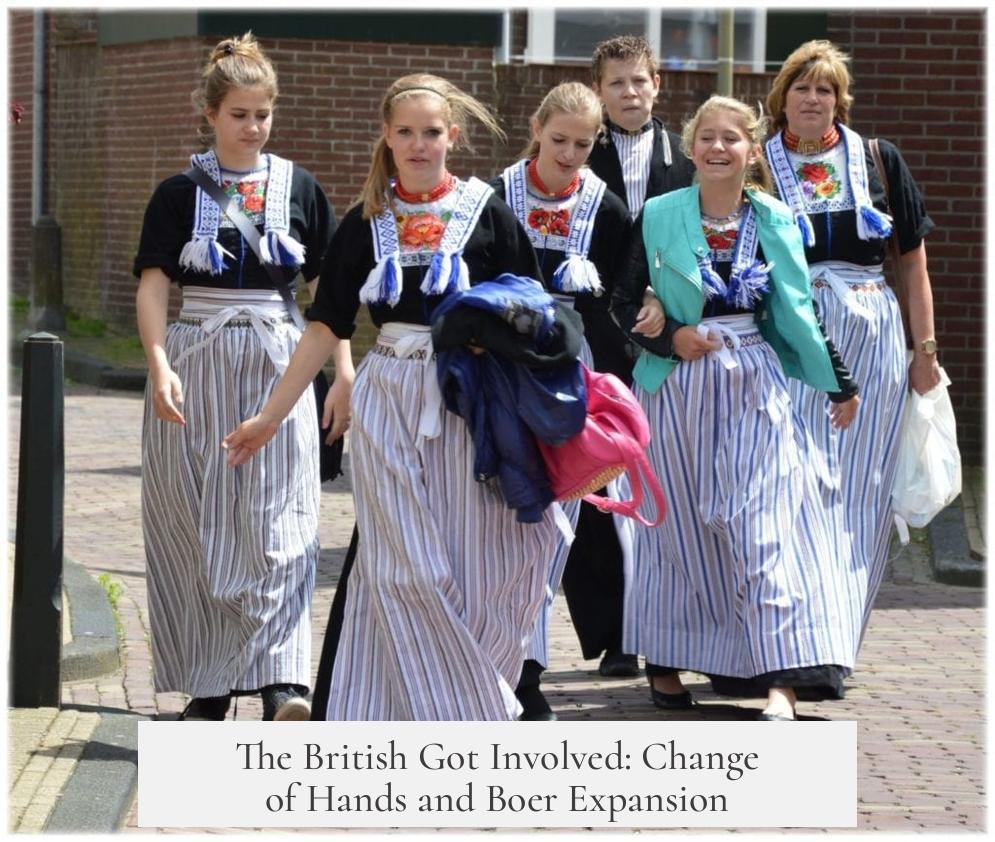
If you think the story ends with the Dutch, think again. Geopolitics threw in a curveball.
During the Napoleonic Wars, France invaded the Netherlands, setting up Louis-Napoleon—Napoleon’s brother—as king. This put the Dutch on France’s side in conflict with Britain. The British, liking the Cape’s strategic importance, swooped in and seized the Cape Colony.
The Congress of Vienna later formally awarded the colony to Britain. The Dutch king got a fancy compensation package—Belgium, Luxembourg, and a royal title. But the Cape was now British.
Many Boers, not happy with British rule and cultural differences, pushed further inland. They founded independent states like Transvaal and the Orange Free State. Meanwhile, coastal areas became more Anglicized, though Afrikaans, a language rooted in Dutch, still tells the tale of its origins.
Diamonds, Wars, and the British Empire’s Final Grip
The story gets even juicier with the discovery of diamond mines deep inland. Suddenly, the British had a new reason to step up pressure on the Boers. This led to two brutal conflicts known as the Boer Wars.
Despite early Boer victories, the British eventually imposed direct control over all Southern Africa, making it a formal part of the British Empire.
The VOC Trade Route: Winds, Currents, and Commerce
Going back to the roots of Dutch movement to South Africa, the trade route to “Oost-Indische” (East Indies) was vital. Ships sailed down the Atlantic, relying on predictable northern and southern currents, then rounded the Cape to catch seasonal Indian Ocean trade winds heading east.
South Africa’s geographical position made it a natural crossroads for this maritime traffic. The Cape Colony acted not just as a refueling station but also as a weather gatekeeper. Ships could be stuck waiting for favorable winds—another reason why maintaining a well-supplied base there was important.
So—Why South Africa, Again?
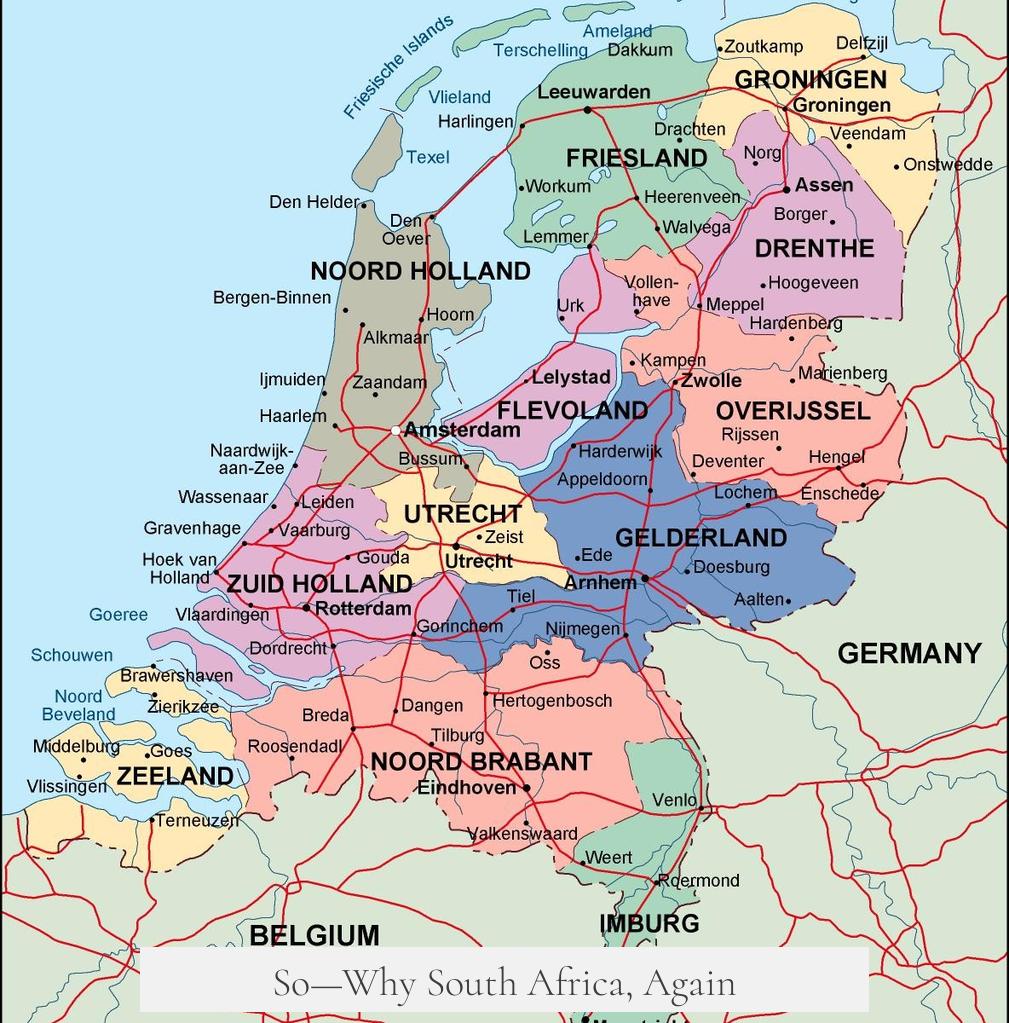
South Africa offered:
- A strategic location at the globe’s maritime crossroads.
- A reliable place for fresh supplies on the grueling journey East.
- Land for farmers to expand and support resupply needs.
- A spot to wait for the right winds, which could take days or weeks.
- A melting pot of settlers from the Netherlands, Germany, and France, adding diversity.
Without South Africa, Dutch ships would face longer, riskier voyages, risking spoiled food, sick crew, and ship damage. South Africa helped bridge that gap, turning a lonely ocean stretch into a manageable series of voyages.
What Can We Learn From This?
The Dutch movement into South Africa wasn’t random colonial zeal; it was a pragmatic strategic decision tightly linked to the rules of sea travel and trade in the 17th century. It also reminds us how geography and global events shape migration and settlement patterns.
Next time you hear about Cape Town, recall it started as a humble pit stop—now it’s a vibrant metropolis with deep historical layers. And unlike a simple gas station, its legacy shaped the fate of nations.
Curious how modern South Africa’s culture still echoes this origin story? Look no further than Afrikaans language, the architectural styles, and even the farming traditions around the Cape today.
In short: The Dutch moved to South Africa because it was the best place to fuel a global empire—and the land and people who followed turned that stopover into something far greater.

